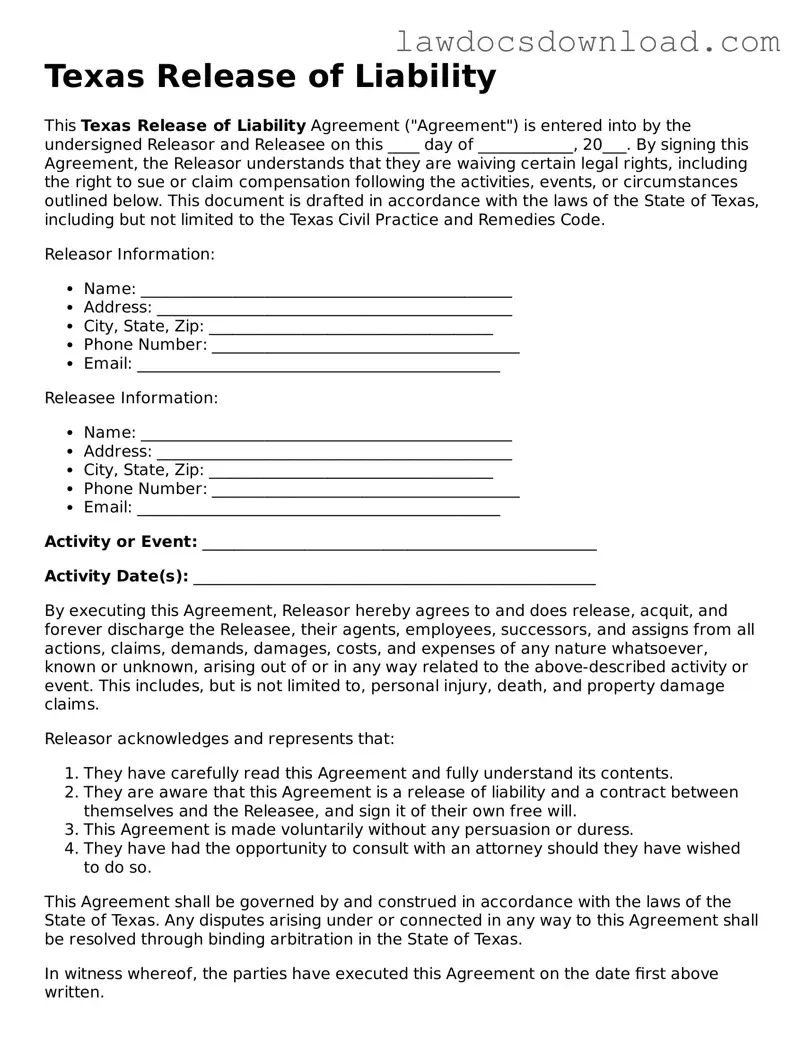Texas Release of Liability
This Texas Release of Liability Agreement ("Agreement") is entered into by the undersigned Releasor and Releasee on this ____ day of ____________, 20___. By signing this Agreement, the Releasor understands that they are waiving certain legal rights, including the right to sue or claim compensation following the activities, events, or circumstances outlined below. This document is drafted in accordance with the laws of the State of Texas, including but not limited to the Texas Civil Practice and Remedies Code.
Releasor Information:
- Name: _______________________________________________
- Address: _____________________________________________
- City, State, Zip: ____________________________________
- Phone Number: _______________________________________
- Email: ______________________________________________
Releasee Information:
- Name: _______________________________________________
- Address: _____________________________________________
- City, State, Zip: ____________________________________
- Phone Number: _______________________________________
- Email: ______________________________________________
Activity or Event: __________________________________________________
Activity Date(s): ___________________________________________________
By executing this Agreement, Releasor hereby agrees to and does release, acquit, and forever discharge the Releasee, their agents, employees, successors, and assigns from all actions, claims, demands, damages, costs, and expenses of any nature whatsoever, known or unknown, arising out of or in any way related to the above-described activity or event. This includes, but is not limited to, personal injury, death, and property damage claims.
Releasor acknowledges and represents that:
- They have carefully read this Agreement and fully understand its contents.
- They are aware that this Agreement is a release of liability and a contract between themselves and the Releasee, and sign it of their own free will.
- This Agreement is made voluntarily without any persuasion or duress.
- They have had the opportunity to consult with an attorney should they have wished to do so.
This Agreement shall be governed by and construed in accordance with the laws of the State of Texas. Any disputes arising under or connected in any way to this Agreement shall be resolved through binding arbitration in the State of Texas.
In witness whereof, the parties have executed this Agreement on the date first above written.
Releasor's Signature: ___________________________________ Date: _______________
Releasee's Signature: ___________________________________ Date: _______________
Witness's Signature: ___________________________________ Date: _______________
This document is not a substitute for legal advice. Participants are encouraged to consult a legal professional to ensure that their rights and interests are adequately protected and served.
